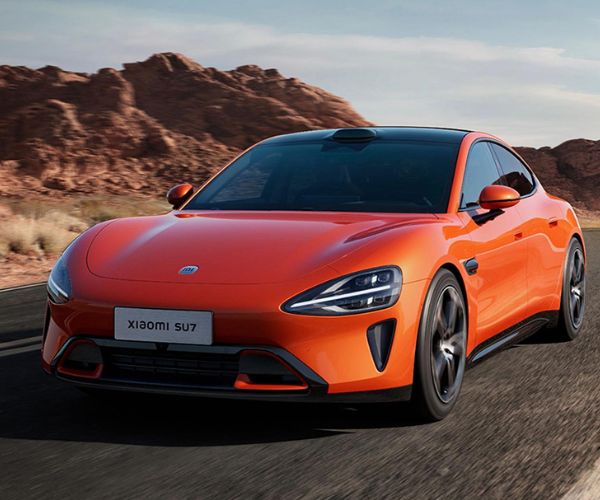
New energy vehicles (NEVs), as a key alternative to traditional gasoline-powered vehicles, have gained widespread attention and rapid development globally in recent years. The main types of NEVs include Battery Electric Vehicles (BEVs), Plug-in Hybrid Electric Vehicles (PHEVs), and Hydrogen Fuel Cell Electric Vehicles (FCEVs). With advances in technology and policy support, NEVs have made significant progress in terms of market share, technological innovation, and industry chain development.
First, the rapid growth of the NEV market can be attributed to multiple driving factors. Governments around the world, in response to environmental pollution and energy crises, have implemented a range of policies to support NEV development. These include offering purchase subsidies, tax incentives, and building charging infrastructure, all of which have effectively promoted the widespread adoption of NEVs. Furthermore, the growing environmental awareness among consumers and their demand for energy-efficient travel have further driven the expansion of the NEV market.
Second, technological innovation is one of the core drivers of NEV development. Breakthroughs in battery technology, such as improvements in the energy density of lithium-ion batteries, reductions in costs, and faster charging speeds, have provided solid support for enhancing NEV performance and market acceptance. Additionally, advancements in motor control systems, lightweight materials, and intelligent driving technologies have significantly improved the overall performance and user experience of NEVs. For example, Tesla has integrated autonomous driving technology extensively in its models, securing a dominant position in the high-end electric vehicle market.
Third, the improvement of the industry chain is a crucial support for the sustainable development of NEVs. With the growth in market demand, collaborative development among upstream and downstream players in the NEV industry chain has become a trend. From the extraction and supply of key raw materials such as lithium and cobalt in the upstream, to the manufacturing of core components like batteries and motors in the midstream, to the production and sale of vehicles in the downstream, a complete and efficient industrial ecosystem has been formed. For example, China, as the world’s largest NEV market, has a well-established industry chain layout that has attracted significant capital and enterprise investment, fueling the rapid development of the industry.
Despite the significant progress made, the development of NEVs still faces several challenges. Issues such as battery recycling and environmental concerns, insufficient charging infrastructure, and range anxiety need to be addressed. In addition, global economic uncertainty and supply chain risks also pose potential impacts on the NEV industry. According to Qianji Investment Bank, as market demand continues to grow and the industry chain continues to improve, NEVs will enter a more promising development phase.
In 2023, China produced 9.587 million new energy vehicles (NEVs) and sold 9.495 million units, representing year-on-year growth of 35.8% and 37.9%, respectively. From January to May 2024, cumulative NEV sales reached 3.89 million units, an increase of 32.5% year-on-year. In May 2024 alone, NEV sales amounted to 960,000 units, marking a year-on-year growth of 33.3% and a month-on-month increase of 12.4%.
Chapter 1: Top China Electric Car Company
BYD Electric car
 In 2003, BYD officially acquired Xi’an Qin Chuan Automobile Co., Ltd. (now “BYD Auto Co., Ltd.”) and entered the automotive manufacturing and sales sector, marking the beginning of the development journey for China’s independent national automotive brands. To date, BYD has established four major automotive production bases in Xi’an, Beijing, Shenzhen, and Shanghai, reaching internationally leading levels in vehicle manufacturing, mold development, and model design. The company’s industrial layout has become increasingly complete, and BYD has rapidly grown into one of China’s most innovative emerging brands. Its automotive products include a wide range of high, mid, and low-end fuel sedans, automotive molds, automotive parts, dual-mode electric vehicles, and pure electric vehicles. Representative models include traditional high-quality fuel cars such as the F3, F3R, F6, F0, G3, and L3, as well as the S8 sports hard-top convertible, the high-end SUV model S6, the MPV model M6, and the globally leading F3DM dual-mode electric vehicle and the pure electric E6.
In 2003, BYD officially acquired Xi’an Qin Chuan Automobile Co., Ltd. (now “BYD Auto Co., Ltd.”) and entered the automotive manufacturing and sales sector, marking the beginning of the development journey for China’s independent national automotive brands. To date, BYD has established four major automotive production bases in Xi’an, Beijing, Shenzhen, and Shanghai, reaching internationally leading levels in vehicle manufacturing, mold development, and model design. The company’s industrial layout has become increasingly complete, and BYD has rapidly grown into one of China’s most innovative emerging brands. Its automotive products include a wide range of high, mid, and low-end fuel sedans, automotive molds, automotive parts, dual-mode electric vehicles, and pure electric vehicles. Representative models include traditional high-quality fuel cars such as the F3, F3R, F6, F0, G3, and L3, as well as the S8 sports hard-top convertible, the high-end SUV model S6, the MPV model M6, and the globally leading F3DM dual-mode electric vehicle and the pure electric E6.
On November 18, 2024, BYD celebrated its 30th anniversary, marking the official launch of its 10 millionth new energy vehicle.
According to public data, in October 2024, BYD’s total vehicle sales reached 502,700 units, ranking first among domestic automakers. It is expected that the company’s total sales for 2024 will exceed 4 million vehicles. BYD took 13 years to produce its first 1 million new energy vehicles, and 15 years to reach the 5 million mark. However, the second “5 million,” from 5 million to 10 million new energy vehicles, was achieved in just 15 months. In the plug-in hybrid field, BYD, leveraging its scale advantage and powerful integrated supply chain, has been able to price its products at the same level as traditional gasoline vehicles.
In 2022, BYD officially announced its complete exit from the production of gasoline-powered vehicles, focusing solely on the new energy vehicle sector. By 2023, BYD’s electric vehicle sales exceeded 3 million units, with a market share of 22%. In October 2024, BYD’s vehicle sales surpassed 500,000 units, and from January to October, cumulative sales exceeded 3.25 million units, a year-on-year increase of 36.5%. It is expected that BYD will break the 4.2 million sales mark in 2024, establishing itself as a true global leader in electric vehicles. Today, BYD is the top one Chinese Electric Car Brands.
BYD Car Model

BYD Dolphin

BYD Seagull

BYD Qin L

BYD Seal

BYD HAN
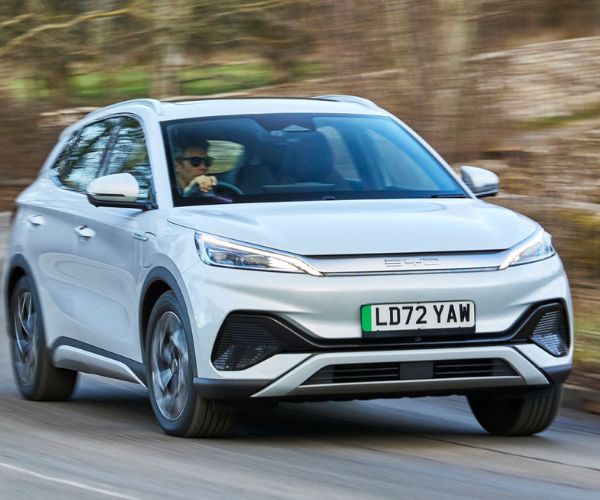
BYD ATTO 3

BYD SONG PLUS
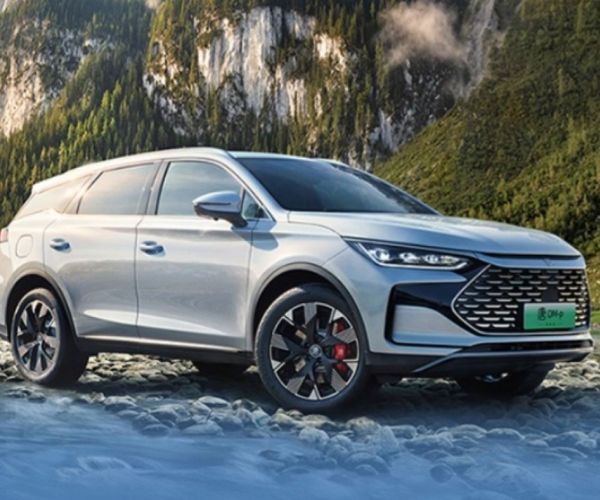
BYD Tang
BYD Luxury Car

Nio Electric Car
 Nio, established in November 2014, is a smart electric vehicle company and Chinese Electric Car Brands headquartered in Hefei, Anhui Province, China. On September 12, 2018, Nio successfully went public on the New York Stock Exchange (NYSE). The company, founded by William Li, who serves as the chairman of the board, has become a prominent player in the global electric car industry.
Nio, established in November 2014, is a smart electric vehicle company and Chinese Electric Car Brands headquartered in Hefei, Anhui Province, China. On September 12, 2018, Nio successfully went public on the New York Stock Exchange (NYSE). The company, founded by William Li, who serves as the chairman of the board, has become a prominent player in the global electric car industry.
Nio’s core business focuses on designing, developing, co-manufacturing, and selling smart electric vehicles, commonly referred to as Nio electric cars. These vehicles integrate advanced battery-swapping technology, battery leasing services, proprietary autonomous driving technology, and subscription-based autonomous driving services. Nio’s product lineup includes the six-seat smart electric flagship ES8, the five-seat smart electric coupe SUV EC7, the smart electric flagship sedan ET7, and the mid-sized smart electric sedan ET5.
The company has attracted investment from leading institutions such as Temasek, Baidu Capital, Sequoia, Hillhouse, Lenovo Group, Warburg Pincus, TPG, GIC, IDG, and Joy Capital. Targeting the high-end smart electric vehicle market, Nio aims to create a joyful lifestyle for users through technological innovation, positioning Nio electric cars as a symbol of luxury and intelligence.
- Model Portfolio:
- The ES8, as a flagship SUV, targets the high-end family vehicle market.
- The ES6 and EC6, positioned as mid-sized SUVs and coupe SUVs respectively, cater to young consumers seeking style and performance.
- The ET7 serves as Nio’s flagship product in the sedan market, leading with its luxurious features and advanced technologies.
- Market Positioning:
Nio focuses on the mid-to-high-end market, with Nio electric cars priced between 350,000 and 600,000 RMB, competing with traditional luxury brands like BMW, Mercedes-Benz, and Audi (BBA). By offering high-performance, intelligent electric vehicles, Nio has successfully established its brand image in the premium market.
Nio holds a significant position in China’s high-end new energy vehicle market. According to 2023 data, Nio achieved a 73.9% market share in the pure electric vehicle segment priced above 400,000 RMB, with the ET7 and ES7 models leading with 25.1% and 15.1% market shares, respectively.
On March 5, 2024, Nio released its Q4 and full-year 2023 financial report. In Q4, the company generated revenue of 17.1 billion RMB, a year-on-year growth of 6.5%, with a vehicle gross margin of 11.9%, achieving double-digit growth for the second consecutive quarter. Its cash reserves increased significantly by 12.1 billion RMB compared to Q3, reaching 57.3 billion RMB. R&D expenditures were 3.97 billion RMB, marking five consecutive quarters of exceeding 3 billion RMB.
For the full year of 2023, Nio reached a record high total revenue of 55.62 billion RMB, a year-on-year increase of 12.9%. Annual R&D spending amounted to 13.43 billion RMB, surpassing 10 billion RMB for the second consecutive year. These achievements underscore Nio’s leadership in the electric car sector and its commitment to innovation and growth in the global market.
Nio EV Model
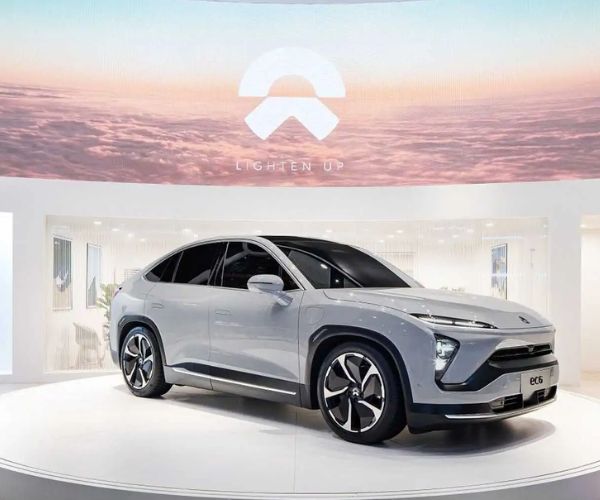
NIO EC6
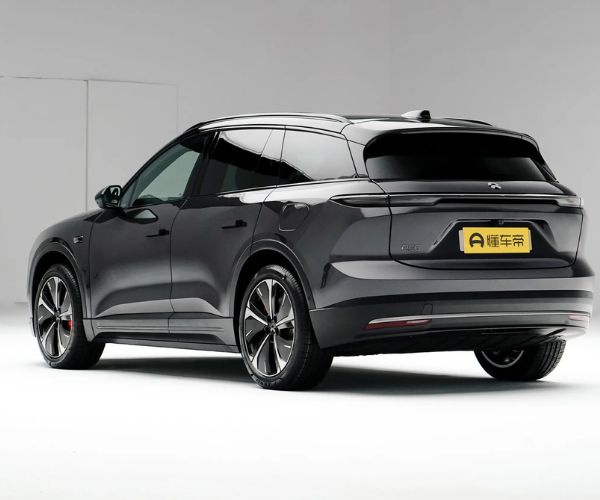
NIO ES6
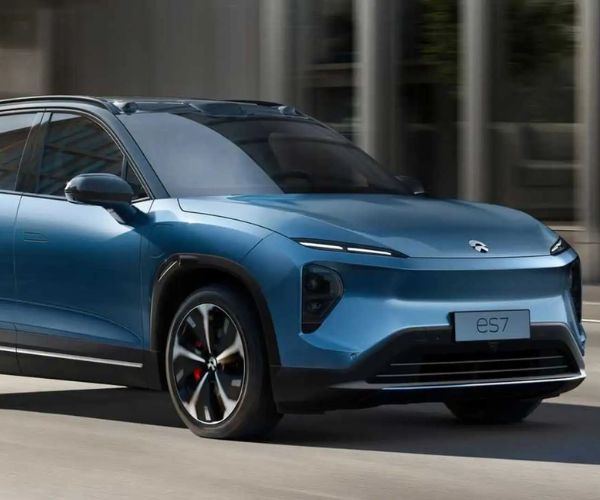
NIO ES7

NIO ES8

NIO ET5
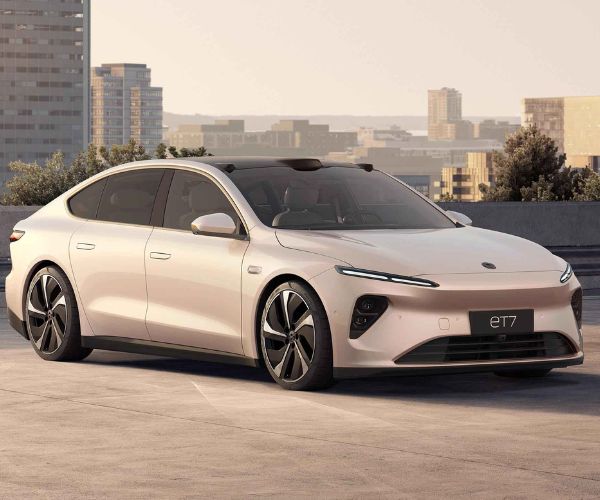
NIO ET7
Li Auto
 Li Auto is a product of Beijing Li Auto Co., Ltd., a Chinese Electric Car Brands company established in July 2015 with a mission to transform mobility through technology for the benefit of more people. The company’s founder, Li Xiang, who also founded Autohome, has over a decade of experience in the automotive industry.
Li Auto is a product of Beijing Li Auto Co., Ltd., a Chinese Electric Car Brands company established in July 2015 with a mission to transform mobility through technology for the benefit of more people. The company’s founder, Li Xiang, who also founded Autohome, has over a decade of experience in the automotive industry.
In October 2018, Li Auto launched its intelligent electric vehicle brand and unveiled the Li Auto ONE, an extended-range electric vehicle (EREV). Positioned as a premium mid-to-large SUV, the Li Auto ONE is designed to meet the travel needs of 6–7 people, making it ideal for families.
The vehicle utilizes an extended-range electric powertrain, offering an NEDC range of over 800 kilometers. It also boasts advanced intelligent systems, including a four-screen interactive interface and full-vehicle voice control.
In June 2022, Li Auto introduced its flagship model, the Li Auto L9, a family-oriented smart flagship SUV.
Chehejia (the predecessor of Li Auto) was also founded in July 2015, with a focus on transforming mobility through technology.
Li Xiang, the founder, is a seasoned entrepreneur who built Autohome into a publicly listed company with a market valuation exceeding $10 billion.
In October 2018, the intelligent electric vehicle brand “Li Auto” made its debut, launching the Li Auto ONE, an extended-range electric vehicle. The vehicle is designed as a premium mid-to-large SUV to accommodate 6–7 people for family travel. It features an extended-range electric powertrain with an NEDC range exceeding 800 kilometers and is equipped with advanced smart technologies such as a four-screen interactive system and full-vehicle voice functionality.
Li Auto’s headquarters are located in Beijing, with its production base in Changzhou. As a newcomer to the new energy vehicle market, Li Auto stands out as one of the most profitable companies in the industry.
In 2023, Li Auto delivered a total of 376,000 vehicles, marking a year-on-year growth of 182.2%, securing its position as the top brand among emerging automakers. This achievement also represents the first time a new energy vehicle startup in China has surpassed the milestone of 300,000 annual deliveries.
Li Xiang, Chairman and CEO of Li Auto, shared that since June 2023, Li Auto’s SUV sales have surpassed those of BBA (Mercedes-Benz, BMW, and Audi) for seven consecutive months, making it the best-selling luxury SUV brand in the Chinese market.
In 2023, Li Auto achieved a revenue of 123.85 billion RMB, reflecting a year-on-year increase of 173.5%, becoming the first emerging automaker in China to cross the milestone of 100 billion RMB in annual revenue. The company also posted a net profit of 11.81 billion RMB, marking its first full-year profitability since starting vehicle deliveries.
Building on this success, Li Auto has set even more ambitious goals for the future.
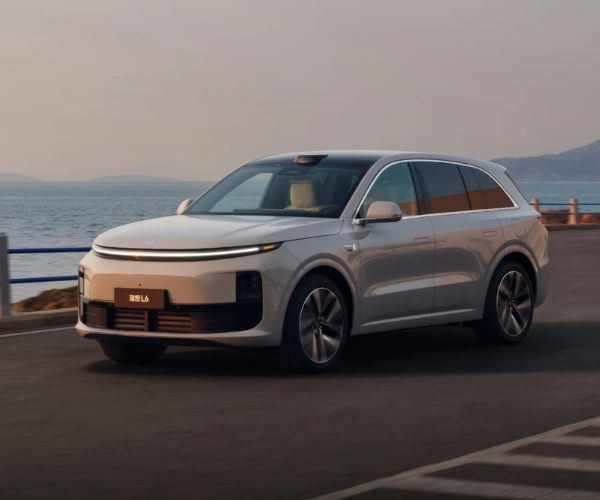
Li L6

Li L7
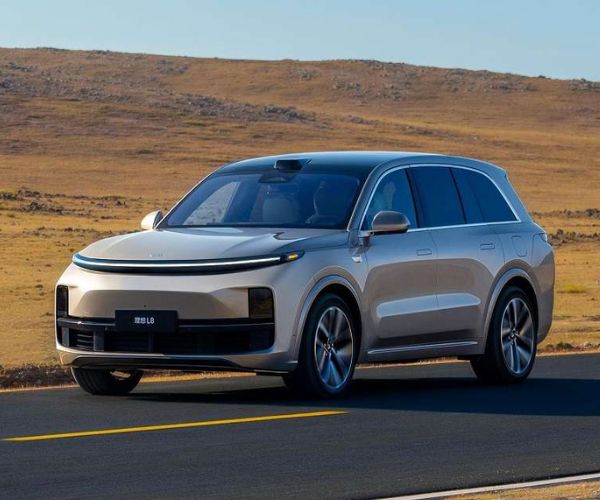
LI L8
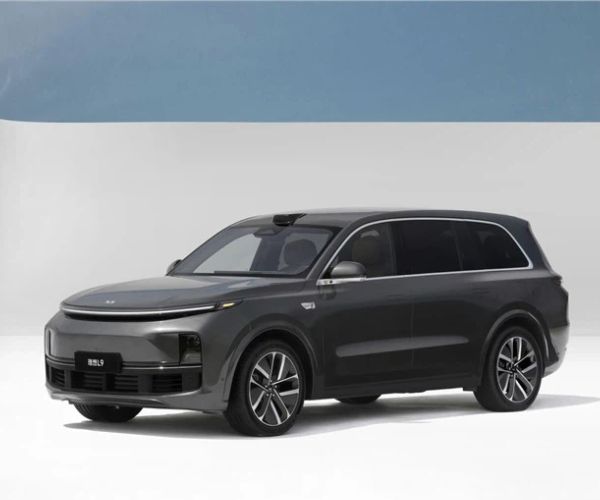
LI L9

LI L9
Xiaopeng Auto
 XPeng Motors Technology Co., Ltd., abbreviated as XPeng Motors, was founded in 2014 and is located in Guangzhou, Guangdong Province. It is a company engaged in automotive research and development as well as sales. He Xiaopeng serves as the chairman. In 2014, He Xiaopeng, together with several investors and partners, including Xia Yan and He Tao, co-founded XPeng Motors. The company has a production base in Zhaoqing. On June 23, 2021, XPeng Motors was listed on the Hong Kong Stock Exchange.
XPeng Motors Technology Co., Ltd., abbreviated as XPeng Motors, was founded in 2014 and is located in Guangzhou, Guangdong Province. It is a company engaged in automotive research and development as well as sales. He Xiaopeng serves as the chairman. In 2014, He Xiaopeng, together with several investors and partners, including Xia Yan and He Tao, co-founded XPeng Motors. The company has a production base in Zhaoqing. On June 23, 2021, XPeng Motors was listed on the Hong Kong Stock Exchange.
XPeng Motors’ design philosophy focuses on simplicity and practicality. It strives for elegant body proportions, clean and powerful lines, and refined, diverse material details. The design emphasizes that every feature should be meaningful and based on functionality. In particular, in the interior’s human-machine interaction design, the company seeks to deeply understand user behavior, creating an emotionally intelligent vehicle with an immersive user experience.
XPeng Motors insists on fully independent development of intelligent driving assistance software and core hardware. Its XNGP full-scenario intelligent driving assistance system provides users with a smarter, more convenient, and safer driving experience.
XPeng’s design team includes top designers from leading international and domestic companies such as Lamborghini, Ford Asia-Pacific, Pan Asia, and GAC, and has established the XPeng Motors Design Center at 8 Bridge, Shanghai. In 2023, the company achieved total revenue of 30.68 billion yuan, a year-on-year increase of 14.2%. However, it reported a net loss of 10.38 billion yuan, compared to a net loss of 9.14 billion yuan in 2022.
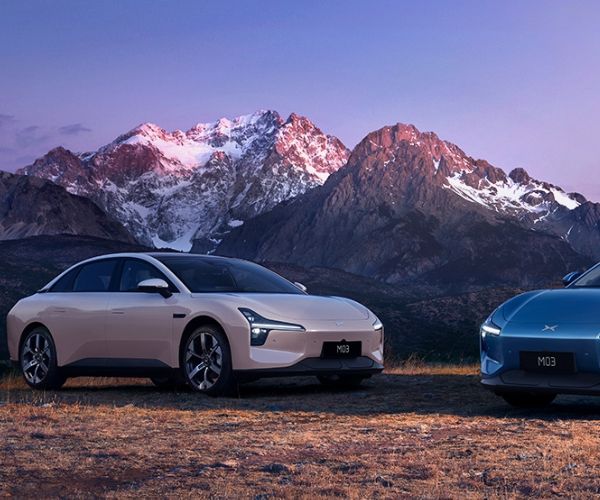
Xpeng M03
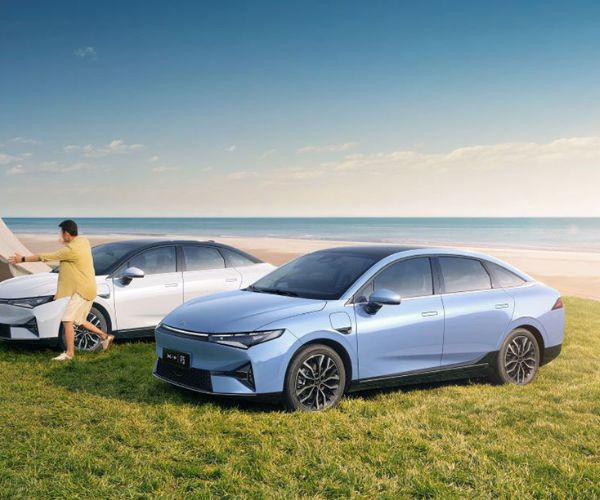
Xpeng P5
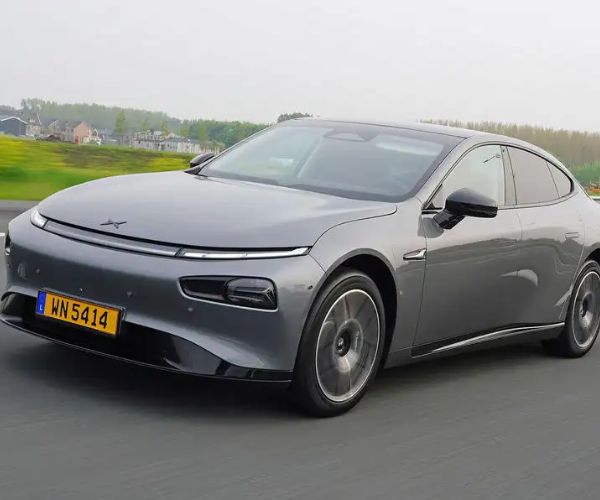
Xpeng P7
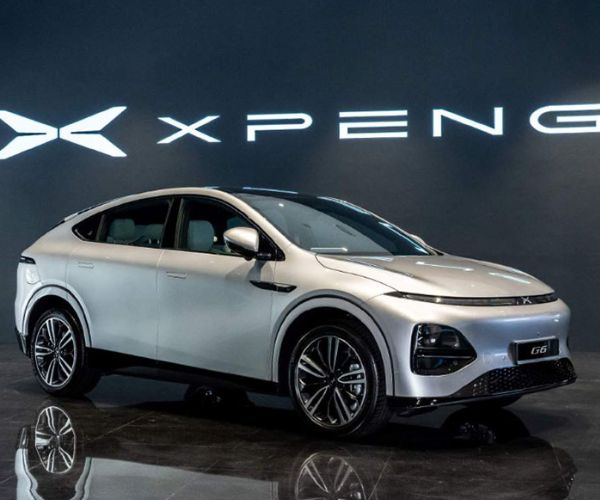
Xpeng G6

Xpeng G9
Zeeker Auto
 ZEEKR was founded in March 2021 and is headquartered in Ningbo, Zhejiang Province, China. As a high-end intelligent electric vehicle brand under Geely Holding Group-Chinese Electric Car Brands, ZEEKR’s mission is to “co-create an ultimate experience of mobility life,” with a focus on the research and development of intelligent electric mobility technologies. ZEEKR has quickly risen within the industry, and by October 2024, the company had delivered over 350,000 vehicles in just 35 months, setting a new record for the fastest delivery of electric vehicles by a new energy brand.
ZEEKR was founded in March 2021 and is headquartered in Ningbo, Zhejiang Province, China. As a high-end intelligent electric vehicle brand under Geely Holding Group-Chinese Electric Car Brands, ZEEKR’s mission is to “co-create an ultimate experience of mobility life,” with a focus on the research and development of intelligent electric mobility technologies. ZEEKR has quickly risen within the industry, and by October 2024, the company had delivered over 350,000 vehicles in just 35 months, setting a new record for the fastest delivery of electric vehicles by a new energy brand.
To date, ZEEKR offers four models: 001, 009, X, and 007. The brand has secured the position of the second-largest luxury electric vehicle brand by total sales, only behind Tesla.
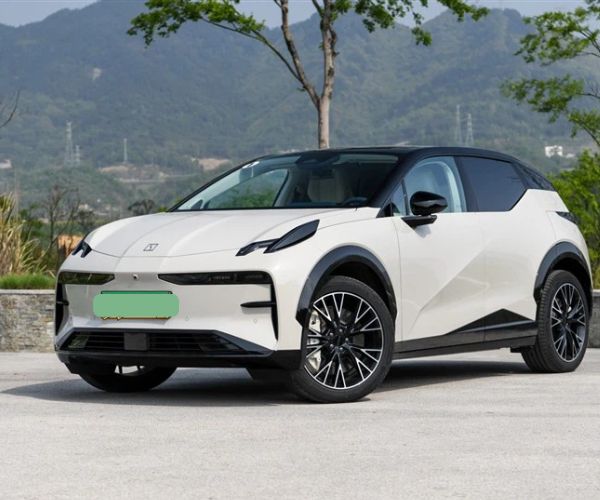
Zeeker X

Zeeker 007
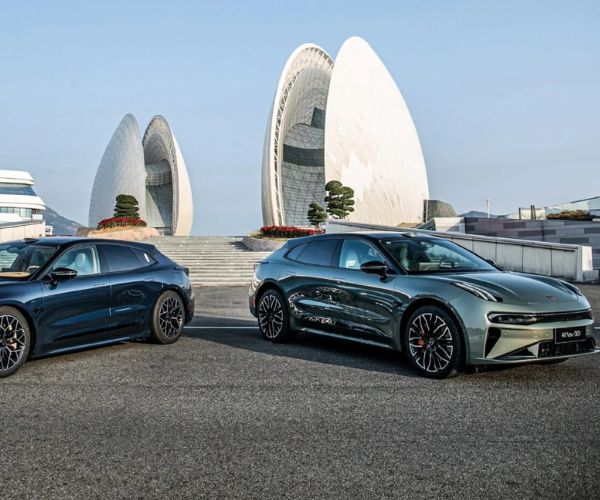
Zeeker 001
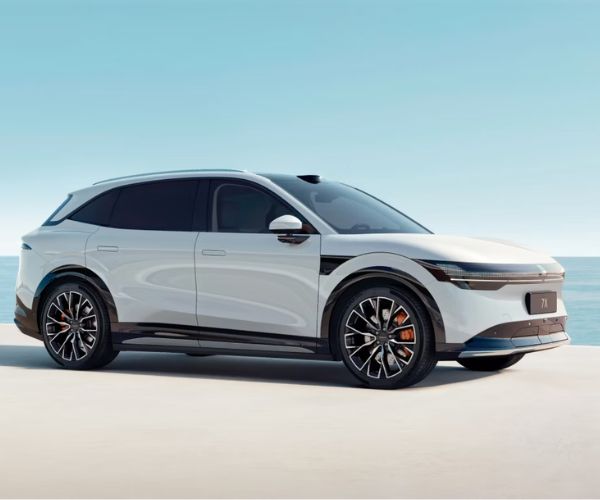
Zeeker 7X SUV
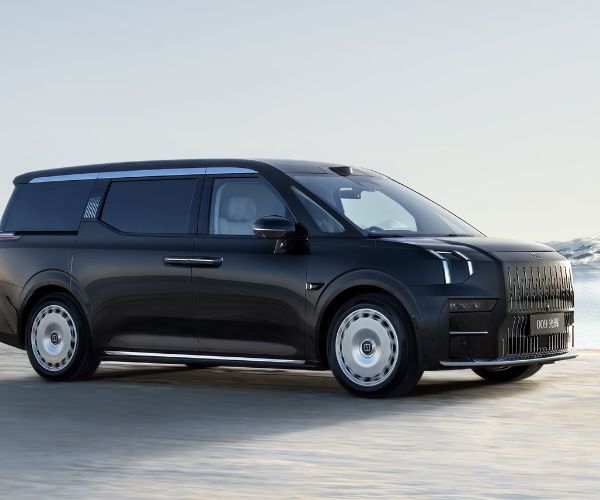
Zeeker 009 MPV
Huawei Auto

Huawei Automotive refers to vehicles developed in strategic partnership with automotive manufacturers, utilizing Huawei’s autonomous driving solutions. Harmony Intelligent Mobility Alliance (HIMA) is Huawei’s intelligent automotive technology ecosystem, launched to advance smart vehicle technologies with partners and deliver exceptional intelligent automotive products and ultimate smart mobility experiences to users. By integrating Huawei’s intelligent automotive solutions, including intelligent driving, intelligent cockpits, intelligent vehicle control, and software-defined vehicles, HIMA is dedicated to bringing the digital world into every car.
HIMA’s product lineup includes several series of models, such as Wenjie, Zhijie, and Xiangjie. Specific models include the Wenjie M5, Wenjie M7, Wenjie M9, and Zhijie S7, among others. These vehicles incorporate Huawei’s cutting-edge technologies, such as the HUAWEI ADS advanced intelligent driving system, HarmonyOS intelligent cockpit, and Huawei Tuling intelligent chassis, while also adhering to high standards in design, performance, and safety. HIMA’s intelligent driving technology integrates multi-dimensional perception hardware, high-performance computing platforms, and Huawei’s proprietary humanized algorithms to create a comprehensive intelligent driving experience.
The intelligent cockpit, powered by the HarmonyOS operating system, enables multi-user, multi-zone interaction and seamless multi-device connectivity, providing an enriched audio-visual entertainment experience. Additionally, HIMA emphasizes the concept of software-defined vehicles through the HUAWEI iDVP intelligent vehicle digital platform, creating an open, flexible, secure, and rapidly expandable digital platform for smart vehicles.
HIMA has shown impressive market performance. In October 2024, it delivered 41,643 new vehicles, with the Wenjie M9 and Wenjie M7 series standing out. According to Huawei’s Executive Director Yu Chengdong, from January 1 to June 9, 2024, HIMA’s sales reached 159,100 units, ranking first among new energy brands in China’s market. The average price of its products approaches 400,000 RMB, primarily capturing market share from traditional luxury brands like BBA (BMW, Benz, Audi).

AITO M5

AITO M7

AITO M9
Aion Auto

GAC Aion New Energy Automobile Co., Ltd. (abbreviated as “GAC Aion”) was established on July 28, 2017, as the strategic core platform for GAC Group’s development of intelligent connected new energy vehicles (NEVs). Since its inception, GAC Aion has adhered to the principles of “EV (pure electric) + ICV (intelligent connected vehicles)” and innovation-driven growth. The company built China’s first dedicated pure electric factory and established the internationally leading Aion brand, launching five world-class products.
After five years of development, GAC Aion has become a leading global NEV enterprise, operating two factories with an annual production capacity of 400,000 units and achieving a compound annual growth rate exceeding 120%. Its production and sales consistently rank among the industry’s top three. GAC Aion’s EV technology has reached world-leading levels, and its ICV technology is among the global frontrunners. The company has introduced four world-class intelligent pure electric models (AION S/V/Y, which dominate their respective market segments, and AION LX, which has become a benchmark for high-end intelligent electric vehicles). GAC Aion has also pioneered reverse output of products and technologies to joint ventures like GAC Honda, GAC Toyota, and GAC FCA.
GAC Aion has developed a fully integrated online and offline marketing service ecosystem, establishing a distribution framework that combines “online + offline,” “car towns + shopping malls,” and “direct sales + dealerships”, creating a globally competitive core system. Currently, the AION Y, AION S Plus, and AION V Plus dominate their respective segments in the 150,000–250,000 RMB price range. The recent update of the AION LX Plus at the beginning of the year further enriched and refined Aion’s product lineup.
With expanded production capacity, GAC Aion has quickly achieved a breakthrough in sales volume and is well-positioned to capitalize on the expected boom in the NEV market, offering significant growth potential in the future.
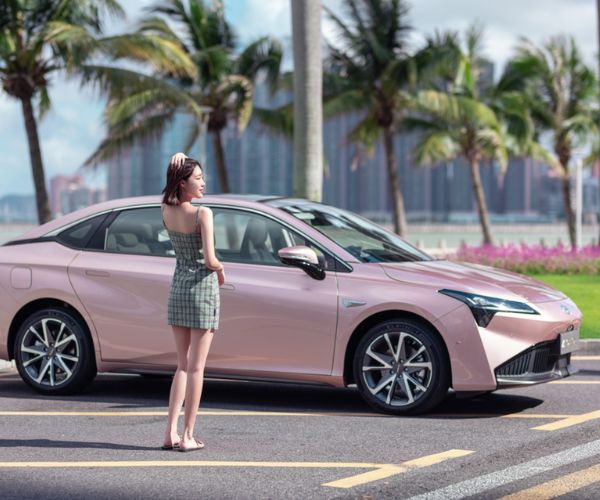
AION S
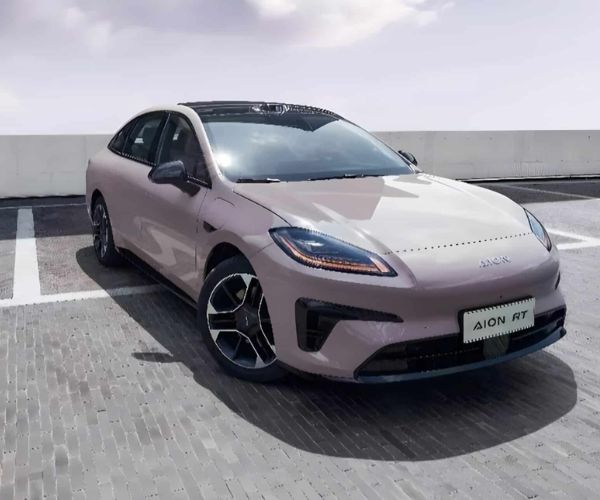
AION RT
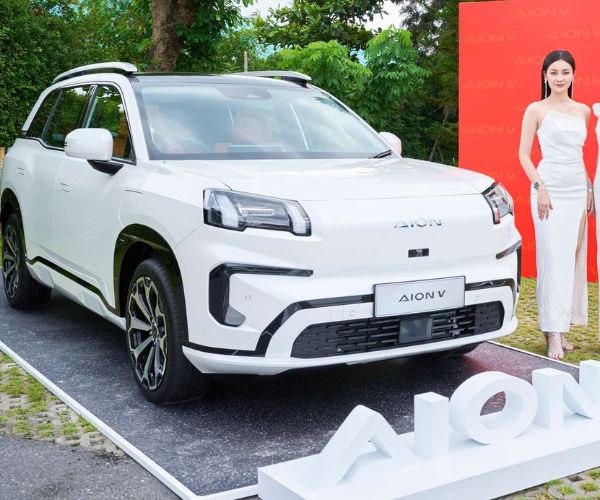
AION V

AION Y
Chinese Electric Car Brands-Leapmotor
 Leapmotor Technology Co., Ltd., an intelligent electric vehicle brand and Chinese Electric Car Brands, was founded on December 24, 2015, in Binjiang District, Hangzhou, Zhejiang Province. Since its inception, Leapmotor has focused on independently developing core technologies. The company has successfully self-developed three key areas: intelligent power systems, intelligent connectivity, and intelligent driving. It is a full-vehicle manufacturer with complete independent research and development capabilities and mastery of core technologies for intelligent electric vehicles.
Leapmotor Technology Co., Ltd., an intelligent electric vehicle brand and Chinese Electric Car Brands, was founded on December 24, 2015, in Binjiang District, Hangzhou, Zhejiang Province. Since its inception, Leapmotor has focused on independently developing core technologies. The company has successfully self-developed three key areas: intelligent power systems, intelligent connectivity, and intelligent driving. It is a full-vehicle manufacturer with complete independent research and development capabilities and mastery of core technologies for intelligent electric vehicles.
In September 2022, Leapmotor was successfully listed on the main board of the Hong Kong Stock Exchange, becoming the fourth listed electric vehicle startup company after NIO, XPeng, and Li Auto. In 2023, Leapmotor achieved an annual sales volume of 144,000 units, marking a 29.7% year-on-year growth. Total revenue reached 16.75 billion RMB, a 35.2% year-on-year increase. Despite double-digit growth in sales and revenue, the company reported a net loss of 4.22 billion RMB.
In May 2024, Leapmotor partnered with global automotive giant Stellantis Group to establish Leapmotor International, pioneering a “reverse joint venture” model. This initiative positioned Leapmotor as a key player in exporting Chinese automotive brands and products. Within just five months, the collaboration successfully addressed challenges related to product development, regulatory certification, channels, and services, charting a new path for Chinese automakers in global markets.

Leapmotor T03

Leapmotor C01
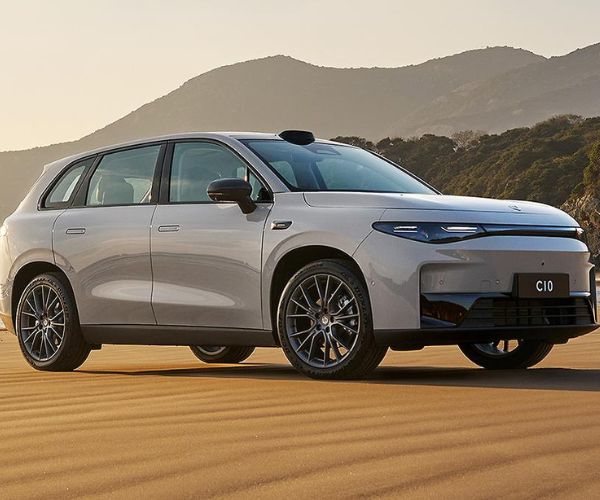
Leapmotor C10
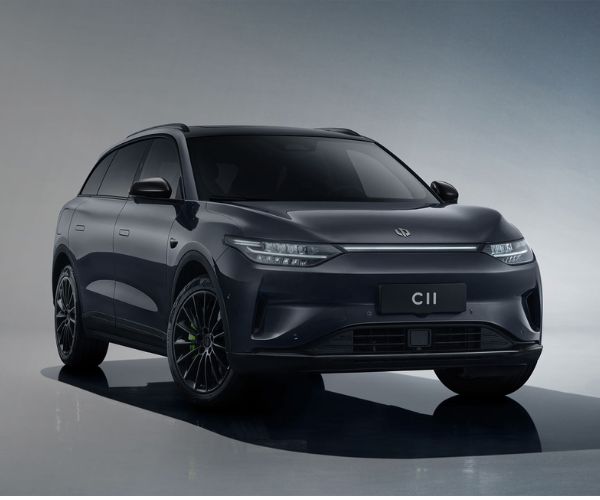
Leapmotor C11
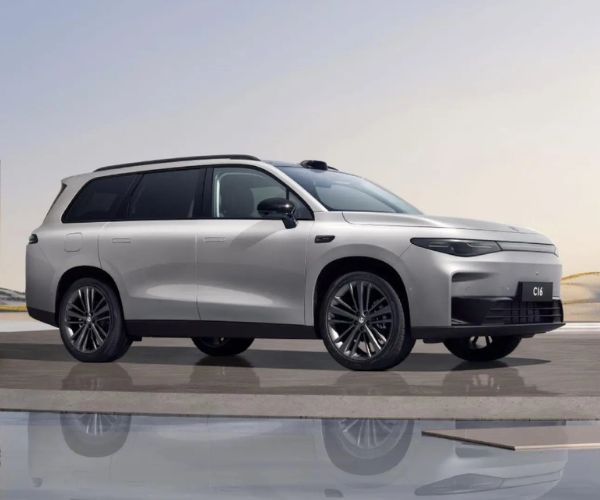
Leapmotor C16
Xiaomi Automobile
 Xiaomi Automobile Co., Ltd. is an intelligent electric vehicle company and Chinese Electric Car Brands under Xiaomi, officially registered on September 1, 2021. The establishment of Xiaomi Automobile marks Xiaomi Group’s formal entry into the intelligent electric vehicle sector. Leveraging Xiaomi Group’s deep expertise in smart hardware and IoT, the company is dedicated to developing and manufacturing high-quality intelligent electric vehicles.
Xiaomi Automobile Co., Ltd. is an intelligent electric vehicle company and Chinese Electric Car Brands under Xiaomi, officially registered on September 1, 2021. The establishment of Xiaomi Automobile marks Xiaomi Group’s formal entry into the intelligent electric vehicle sector. Leveraging Xiaomi Group’s deep expertise in smart hardware and IoT, the company is dedicated to developing and manufacturing high-quality intelligent electric vehicles.
Xiaomi Group’s initial investment in the automotive business was 10 billion RMB, with plans to invest an additional 10 billion USD over the next 10 years, demonstrating Xiaomi’s long-term commitment and substantial financial backing for the automotive sector. From the very beginning, Xiaomi Automobile has placed great emphasis on research and development, quickly assembling a research team of over 3,000 people, covering areas such as autonomous driving, intelligent cockpit, and electric drive technology.
Xiaomi Automobile’s market positioning focuses on the mid-to-high-end intelligent electric vehicle market, aiming to provide users with a high-performance, intelligent driving experience. By analyzing market trends and consumer demands, Xiaomi Automobile has identified its target consumer group: young consumers who are particularly attracted to the latest technologies and intelligent experiences. This group is typically open to new ideas and willing to try new things. With the improvement in economic levels and consumption upgrades, the middle-class family has become an important consumer group for intelligent electric vehicles. Xiaomi Automobile aims to meet the needs of this demographic with its high cost-performance ratio and advanced technological features.
With precise market positioning, coupled with Xiaomi’s existing large user base and ecosystem advantages, Xiaomi Automobile is expected to carve out a strong presence in the intelligent electric vehicle market and gradually expand its market share. At the same time, the company is constantly exploring and innovating, striving to stand out in the competitive market.
Xiaomi Automobile’s first model, the SU7, has attracted wide attention due to its unique market positioning and high-end technical configuration. Positioned as a high-performance electric sedan, the SU7’s design language and performance specifications target the high-end market. The SU7 is designed to compete with internationally renowned brands like the Porsche Taycan and Tesla Model S, showcasing Xiaomi’s ambition to enter the high-end market. The SU7 features a sporty sedan design with a low front and smooth body lines, emphasizing aerodynamic performance.
The high performance of the SU7 is evident in its acceleration and top speed. It achieves 0-100 km/h acceleration in under 2 seconds, with a top speed of 265 km/h, making it a leader in its class. Currently, Xiaomi SU7 sales exceed 20,000 units per month, with factory production struggling to keep up with the sales pace.

Xiaomi SU7
Chapter 2: Are Chinese electric cars good?
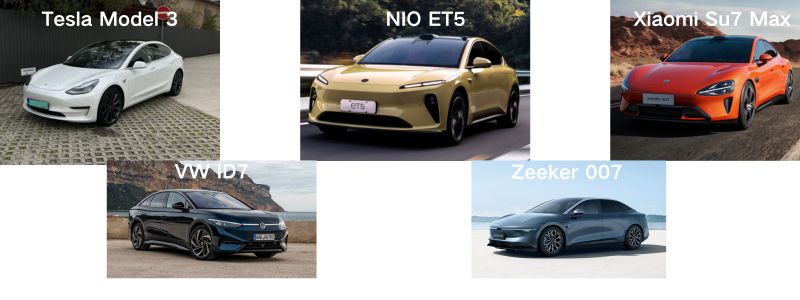

This is a car review report produced in collaboration between the renowned American automotive media Motor Trend and Dongchedi. The purpose of the test is: rather than worrying about the impact of cheap Chinese electric vehicles on the American market, we should consider whether there is actually a demand for these cars.
Motor Trend ranked the Tesla Model 3 at the top, praising its incredible balance between price, design, performance, technology, comfort, and driving enjoyment.
They noted that Tesla’s dynamic maturity is on par with Volkswagen’s, describing it as a more powerful version of the ID7. The dual-motor configuration of the Model 3 provides ample torque and quick response, while its steering is fast with rich road feedback.
The ride is solid yet generally comfortable, with quick steering and a powerful motor, making some people even think the Model 3 could be considered a sports car (although not when compared to the SU7). Whether in the city or on the highway, it offers a fun driving experience—earning the highest praise in this test.
Following closely behind is the Xiaomi SU7 Max, which Motor Trend highly praised for its refined interior and rich driving enjoyment.
They noted that Xiaomi excels in straight-line speed with a responsive motor. In its sport mode, the throttle response is linear, almost like a gasoline car. The Master mode is even more fun, as Xiaomi allows you to shift the torque bias to the rear wheels, making dramatic drifting possible.
The SU7’s chassis and air suspension tuning are also very well done; the vehicle is comfortable with good damping, and there’s only a slight body roll when cornering. However, they also pointed out some issues, such as the imitation in its exterior design, brake system overheating (the Brembo brakes on the SU7 failed to reliably slow down the vehicle), and poor steering feel (the steering on the SU7 is almost non-existent, like in a video game), which need improvement.
Ranked third is the Zeekr 007. With Geely’s global influence and their experience with Volvo and Polestar, high expectations were placed on the 007. However, after testing, they found that it is a beautifully designed, well-appointed sedan, but it lacks true refinement in terms of actual performance.
They described the driving feel of the Zeekr 007 as being similar to an old Lincoln. Its soft, well-damped chassis is interrupted by vague, loose, overly assisted steering, making it difficult to center the steering wheel. Additionally, the brakes are both sensitive and wooden at the same time.
Despite having strong power, the Zeekr doesn’t deliver excitement in a straight line. The throttle response is nonlinear, with most of the power seemingly available only at highway speeds, regardless of the driving mode. Considering its appearance, the driving experience is almost entirely devoid of thrill, which is disappointing.
The NIO ET5 ranked fourth. Motor Trend’s editors believe that while its battery swapping capability (battery exchange) could be a game-changer for apartment dwellers and long-distance travelers, NIO made many compromises to achieve this feature, including internal space, chassis stability, and cost.
In particular, the steering is too light with excessive assist, and the brakes are overly burdened, resulting in a noticeable lack of sporty steering feel when attempting to push the ET5’s power beyond straight-line driving. The ride quality is also insufficient, with continuous road impact echoes reminding the driver that the chassis is among the worst in the test.
While Nomi may be cute, its charm is not enough to overlook some fundamental flaws of the NIO.
Finally, the Volkswagen ID7. The review team felt that the ID7 offers a spacious interior, excellent build quality, and a pleasant driving experience.
Compared to the aforementioned Chinese EVs, which offer inconsistent driving experiences, the ID7 has the stability and chassis feel that they lack.
The ID7’s steering, brakes, and suspension system work in coordination, as if designed by the same engineer. However, it feels a bit dull—more like a gasoline car than an electric vehicle. The underpowered motor in the ID7 Vizzion version does not improve this feeling.
The most disappointing aspect of the ID7 test was Volkswagen’s all-new software suite. The system is slow to start and respond, feeling outdated compared to competitors, and lacking more features available in other models.
Its voice assistant is also disappointing. When asked in Mandarin to find a nearby hamburger restaurant (a task easily handled by other models), it not only failed to locate one, but when suggesting alternative cuisines, the volume suddenly increased, and the assistant’s tone unexpectedly changed, almost as if we were transferred to another operator.
This experience suggests that despite Volkswagen’s long history and strength in hardware and manufacturing, it may need to catch up in software and user experience. In today’s highly competitive EV market, an intuitive, responsive, and feature-rich software system is crucial to attracting and retaining customers. Consumers expect their vehicles to be not just a means of transportation but also a smart device capable of providing a seamless digital experience.
For Volkswagen, this means investing more in software innovation and user interface design to ensure its future electric vehicles meet modern consumer expectations. This could include improvements in voice recognition technology, enhanced personalization features, and providing more integrated services and applications. Through these improvements, Volkswagen can boost its competitiveness in the electric vehicle sector and ensure its models can compete with other leading brands in the market.
Review the full test report and videos, CLICK here
Leave us message to know more


